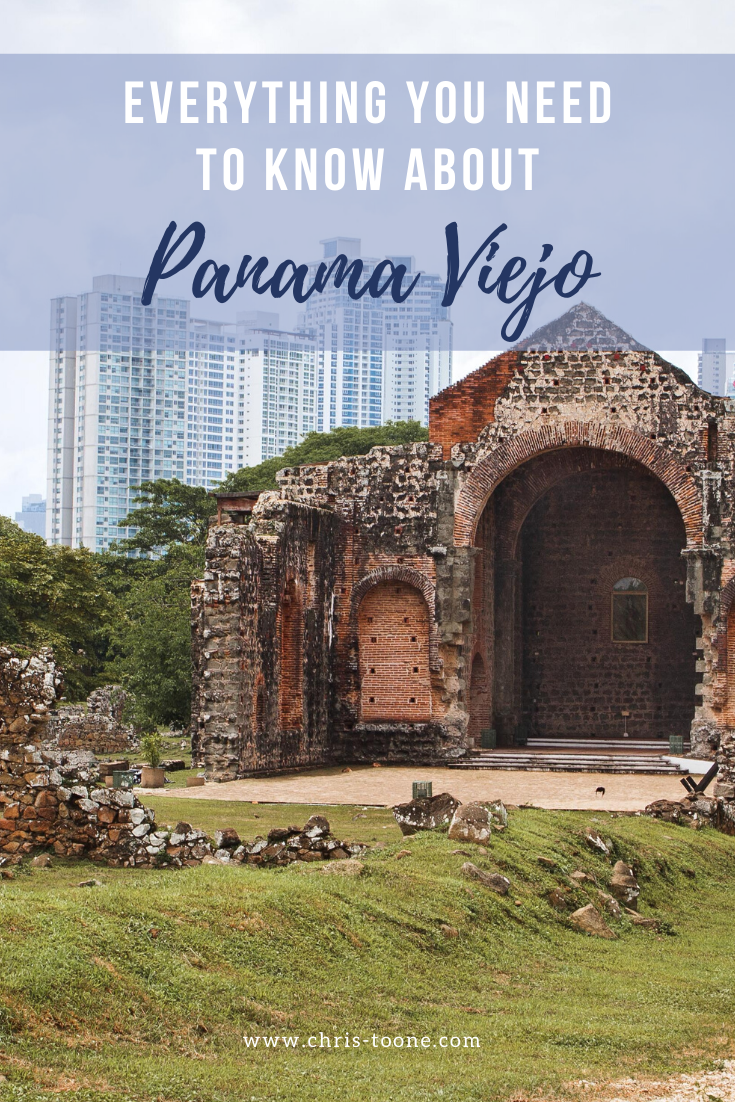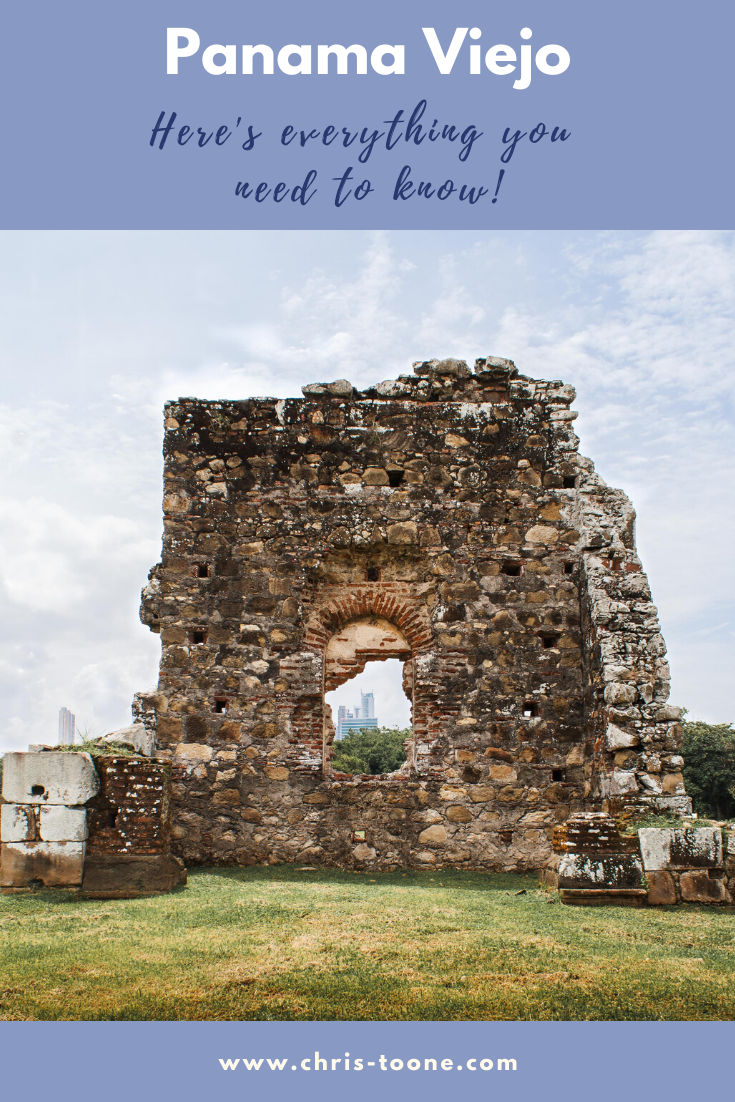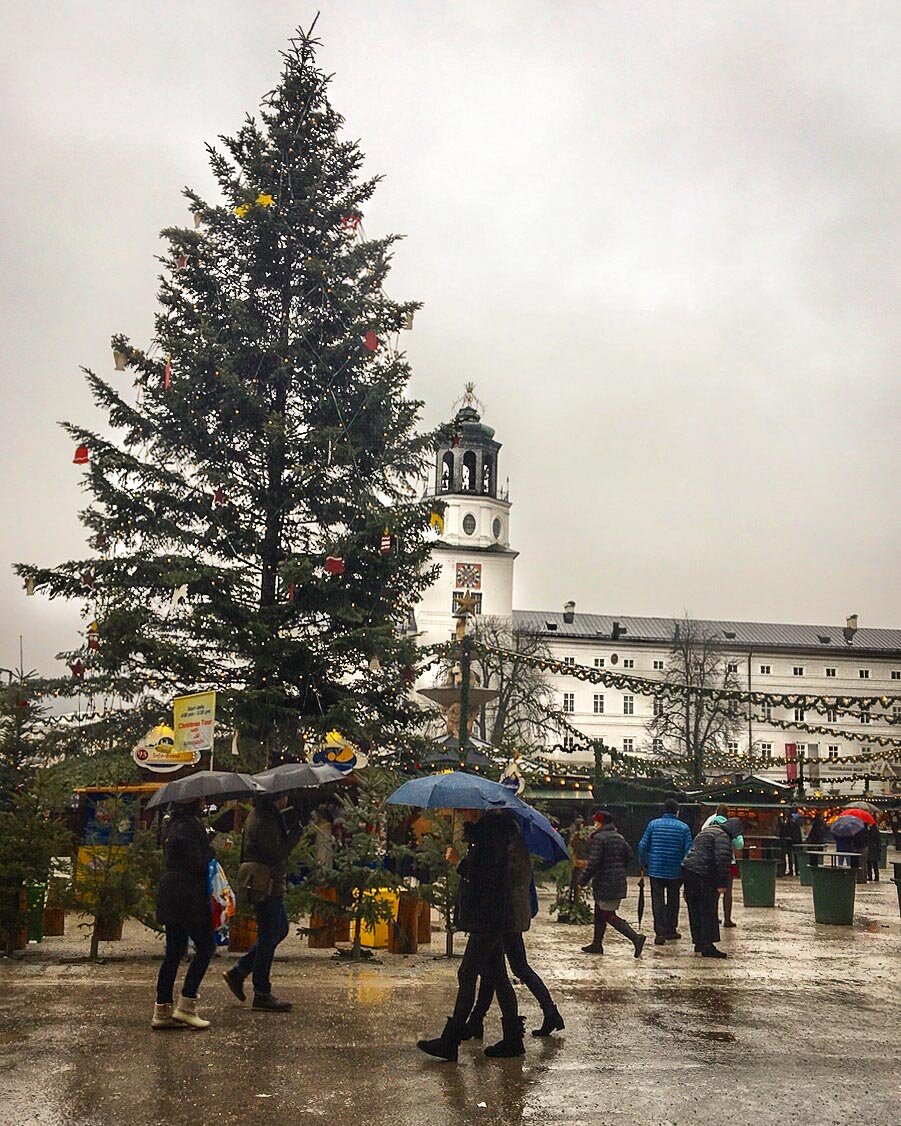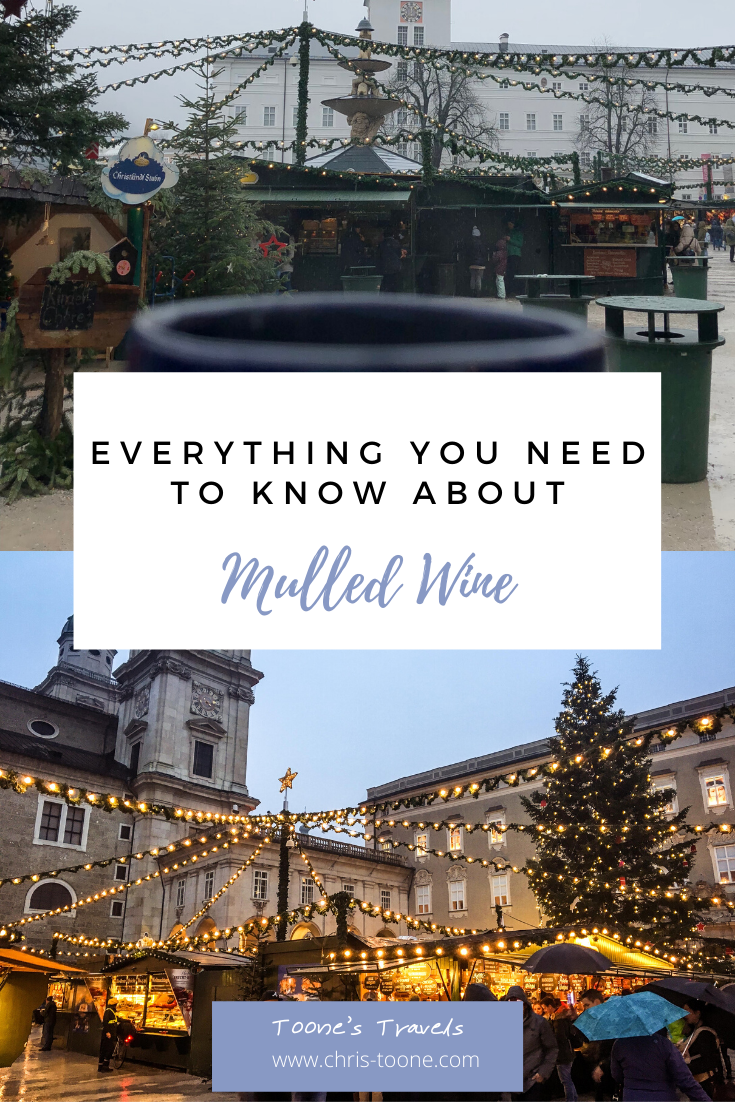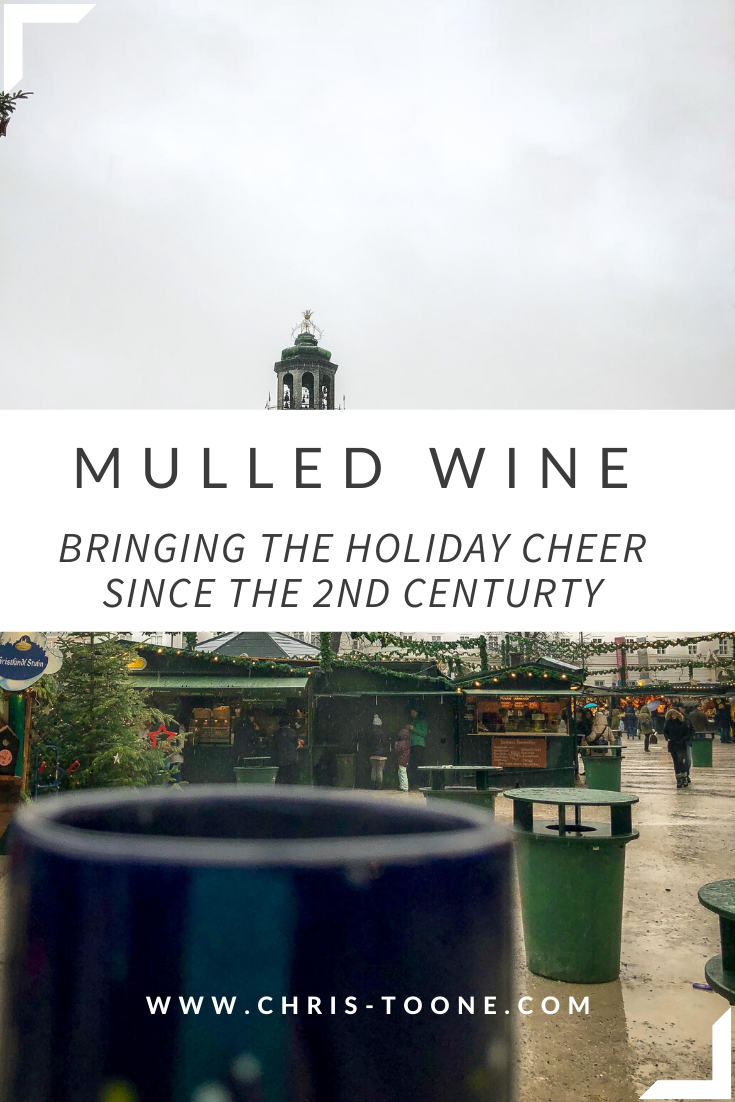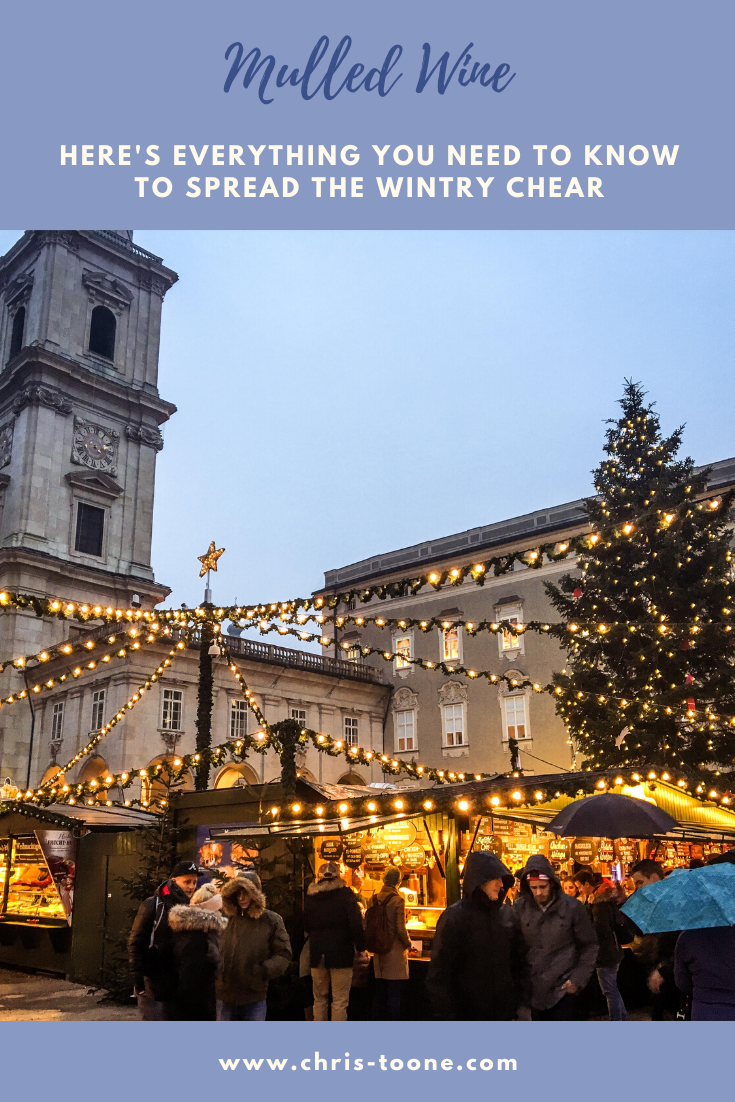Visiting Panama Viejo: Everything you need to know before you go
Panama Viejo was the first European city built along the Pacific Ocean in the Americas and was established in 1519 by Pedro Arias Davila. Its prime location quickly created a trading metropolis, but that led to attacks from pirates that ultimately destroyed the city. Today, Panama Viejo as a UNESCO World Heritage Site. Here's everything you need to know!
Plan a trip to Panama City, Panama and I’m confident you will quickly discover Casco Viejo, which directly translates as “old town”.
The truth is, although the neighborhood is historical and full of colonial-era architecture, it’s not the original Panama City settlement.
Travel 8km northeast of Casco Viejo and you’ll find Panama Viejo, a sprawling 28 acre space full of crumbling ruins that offers visitors insight into the very first colonial outpost in all of Panama.
Here’s everything you need to know before your visit!
THE HISTORY
The first European city built along the Pacific Ocean in the Americas, Panama Viejo, was established in 1519 by Pedro Arias Davila during the Spanish Colonial era.
Situated along a shallow cove, its prime location quickly created a trading metropolis, most notably of gold and silver. Although the settlement was prospering, the ships that transported treasures back to Spain quickly caught the eye of pirates.
In 1671, the attacks came ashore as the famous pirate, Captain Henry Morgan, went for the jugular, ransacking and pillaging Panama Viejo to the point of destruction.
When it was all said and done, thousands of people had perished and the city was left in ruins.
Rather than re-build, the survivors moved and established a new town in what is presently known as Casco Viejo (completed in 1673).
The peninsula in which the new city was settled upon served as a natural geographic defense system while walls, which are still standing to this day, were built as reinforcements.
Fast forward to 1997, Panama Viejo was established as a UNESCO World Heritage Site and is now the most well-funded archaeological site in the entire country.
Ruins at the Panama Viejo UNESCO World Heritage Site in Panama City, Panama
GETTING THERE
Panama Viejo is located on the northern end of the city, 8km away from Casco Viejo.
Parking is limited so it’s best to arrive via taxi or Uber, otherwise you can expect to have to park a good distance away and hoof it to the entrance gate.
If arriving by bus, take the following routes:
Panama Viejo-Via Israel-Albrook (departs from Balboa and from Albrook)
Old Panama-Seafood Market (Exits the Seafood Market)
Panama Viejo-Cinta Costera (Departs from Albrook)
Albrook-Via Porras-Cincuentenario (Departs from Albrook and from May 5)
Address: Panama Viejo, Vía Cincuentenario, Panamá, Panama
Phone: +507 226-8915
Hours: 8am - 5pm, closed on Mondays
COST
General entrance to the Panama Viejo complex includes access to the walking path through the archaeological park, museum, and viewing platform from the Cathedral tower.
National adults: $10.00
Foreign adults: $15.00
Children: $2.00
PACK ACCORDINGLY
Water Bottle - There is a cafe near the Cathedral tower, but bring your own bottle and save some money.
Daypack - The best way to explore the ruins is to walk amongst them, so it’s important to have a convenient way to carry your camera, water bottle, sunscreen, etc.
Rain jacket - Rainy season hits Panama between the months of April and December. I was caught huddling under a tree for shelter more than once during my visit. Don’t be like me; go prepared.
Comfortable Shoes - It’s a 15 minute walk from the ticket booth to the heart of the ruins, so make sure to dress accordingly (a free shuttling service is provided for those in need).
WHAT TO EXPECT
First things first: Visit the museum on the grounds to get a better understanding of all that Panama Viejo represents.
The exhibits trace history from pre-colonial times through the era of Spanish conquistadors as well as original maps of the settlement and history of pirate activity in the area.
At the very least, it serves a great and informative shelter from the rain!
Once you feel your knowledge is sufficient, then it’s to time to wander amongst the ruins (Lonely Planet outlines a great self-guided tour).
Ruins of the Iglesia y Convento de San Francisco looking towards a modern Panama City, Panama
There are set pathways throughout the grounds, but it’s completely acceptable to get up close and personal as long as a sense of respect is maintained. Remember: You don’t want to be the tourist that’s caught damaging a World Heritage Site!
The archaeological complex was fascinating in its own right, but what struck me the most was that the ruins were situated next to a major highway with downtown Panama City as a backdrop, skyscrapers and all.
The contrast between old and new was stark and certainly thought-provoking. It really gave a whole new perspective as to the growth that the area has seen over the centuries, so don’t forget to look beyond what first meets your eyes. See the whole picture and take a moment to process the spectrum of history that stands before you.
Iglesia y Convento de la Concepción is one of the most well-preserved buildings in the complex while the tower of the Catedral de Nuestra Señora de la Asunción allows visitors the chance climb the stairs to the top and look out over the expansive ruins.
The Iglesia y Convento de la Concepción standing tall at Panama Viejo
Other buildings of note include the Casa Reales (Royal Houses) where the center of the town’s power resided, Cabildo de la Ciudad (City Hall) and Casa Alarcón (Panama Viejo’s largest known private residence).
Although visitors flock to Panama City to learn about the canal and roam the colonial quarters of Casco Viejo, a visit to Panama Viejo is a must-do in order to grasp the deep history of this fascinating place. It’s worth the 15 USD entrance fee!
Have you been to Panama City before? What were your thoughts? Let me know in the comments below and until next time, stay safe & happy travels!
Book a tour with Get Your Guide and unlock the beauty of Panama City, Panama!
Sharing is caring… pin this post!
Mulled Wine: Everything you need to know to bring the holiday cheer
Mulled wine has been around for ages, but it hasn't always been synonymous with Christmas. Here's everything you need to know about this popular holiday drink, including a recipe to make it yourself. Cheers!
It’s official: winter is here.
That means it’s time for gingerbread cookies, long shopping lines, and cozying up next to the fireplace… oh, and mulled wine!
If you’ve wandered the Christmas markets throughout Europe during the holidays, then you surely know what I’m talking about. It’s the gold-standard of holiday cheer these days and has carved out a slice of European Christmas culture alongside gift-giving and leaving cookies and milk for Santa.
For those of you that have no idea what I’m referring to, allow me the privilege of introducing you to my favorite holiday alcoholic drink and a sure-fire way to tolerate the in-laws.
Here’s everything you need to know about mulled wine!
A BRIEF HISTORY OF MULLED WINE
Thought to have originated as far back as the 2nd century, mulled wine was created by the Romans as a way to fight off the cold winters. As they expanded their empire throughout Europe, so too did their love for this warm drink.
Popularity continued to grow during the middle ages and the recipe expanded. Europeans began mixing the wine with various herbs and flowers as a way to not only stay warm during long winters but also provide a natural boost to their immune systems.
It’s worth noting that sources of wine were limited back in those days, so it’s likely that the spices had a second and, some may argue more important, function: making the drink more palatable.
As is the case with all great fads, the desire for mulled wine faded over time. It wasn’t until the 1890s when the drink became associated with Christmas and popularity skyrocketed.
Suddenly merchants across Europe began developing their unique recipes to share within their towns and, once distributing their product with festive bottles, mulled wine’s resurgence was in full effect and has continued to spread like wildfire beyond Europe’s borders.
Christmas Market in Salzburg, Austria
WHY IT MATTERS
It matters because mulled wine’s popularity is stronger than ever. Visit any Christmas market in the world and you’ll surely notice a crowd gathered around a table, sipping on a mug and laughing the night away. It’s no longer a matter of if you’ll ever have the chance to try this beautiful blend of wine, fruit, and spices, rather when you will do so.
I was fortunate enough to spend a Christmas over in Austria, meandering between markets and sampling the various recipes as I went.
Regardless of location, whether a large city such as Innsbruck or a smaller town, mulled wine (along with mulled cider, its holiday-sibling) was the staple of each celebration.
For foreigners such as myself, it served as a way to stay warm while aimlessly wandering between the artisan stalls, searching for the perfect gift to bring home, but for the locals, it was much more.
It served as an after-work event, a gathering of neighbors, and a place for family reunions. The drink has quickly become synonymous with good times and holiday cheer.
As much as I enjoyed being able to shop through the expansive markets, I much preferred the smaller villages where the events were centered around the social aspect and nothing more. Simply walk to the town square, grab a mug of mulled wine, snack on a brat, and chat with friends. It was a great way to experience the local Christmas culture!
Christmas Market - Innsbruck, Austria
How to Make Your Own
Several different variations exist as the popularity has grown over the years but, traditionally speaking, mulled wine is made using red wine.
INGREDIENTS:
1 bottle of red wine - 750ml (merlot or cab sauv typically works best)
1 orange - sliced into rounds (plus more for garnish)
6 whole cloves
3 cinnamon sticks (plus more for garnish)
3 star anise
1/4 cup honey
1/2 cup brandy (optional)
DIRECTIONS:
Over medium heat, combine all ingredients into a saucepan
Bring to a simmer (not boil) and reduce heat to low. Simmer over low heat for 10 minutes
Once finished, strain the liquid
Serve warm and garnish with an orange slice and cinnamon sticks
Enjoy and go back for more!
It’s that simple! Whip yourself up a batch at your next family gathering, enjoy the company of others, and bring a slice of European history into your home this holiday season. Bottoms up!
Do you have a story from a Christmas market around the world? Have you created your own unique mulled wine recipe? Let me know in the comments below! I’d love to hear about it.
As always, stay safe & happy travels.





